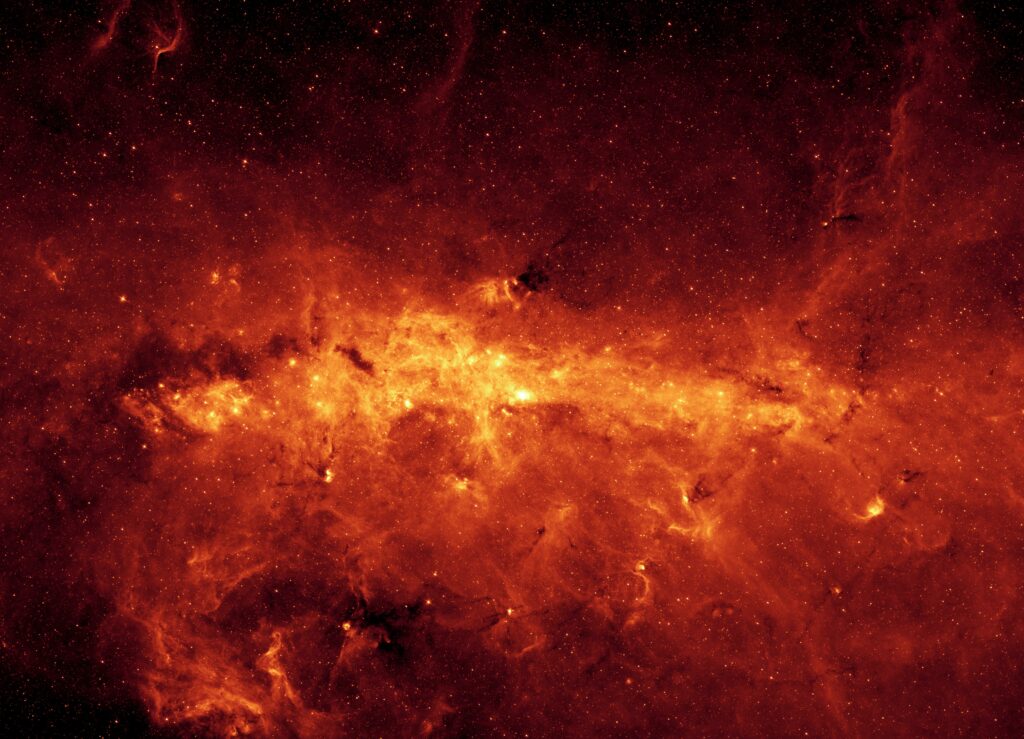“Does this galactic anti-spinward arm make my center disc bulge out too big?”
Astronomers have discovered a brand new shape for the center bar in our galaxy, the Milky Way. It’s not a straight bar, as scientists had previously thought, but rather a peanut-like shape.
Astronomy is unraveling the mysteries of our galaxy in increasing detail. The Milky Way Galaxy is a spiral galaxy, with two to four arms curving out from the center and containing many stars, gas, and dust. Astronomers are unraveling more and more details about our galaxy, including a bulge at its center, which might be a completely different shape than originally thought.
Dr. Junichi Baba and his team conducted a simulation on the world’s more powerful and advanced astrological supercomputer, ATERUI II. This peanut-like shape is a fascinating discovery for scientists because it reveals the incubating functions our Milky Way uses to create new stars. This nuclear-bulging channels gasses, spreading out to other parts of the galaxy, so that new stars and planets are formed from the material. The formation of this gaseous bar and somewhat uniform collection of stars helps connect the arms of the galaxy in a “nuclear furnace”.
This gorging of cosmic gas into the hungry center of the galaxy isn’t to blame for these gravitational bulges. Dr. Baba discovered, that these gasses facilitated star birth. They were able to discover another noteworthy detail: the stars pushed outside the bar must predate the formation of the center bar of the galaxy.
This bar creates new stars yet none are located at the center due to these gravitational belly-bulges. So instead of “getting fat” it’s actually “losing weight” — while “getting fat” on cosmic gas.
It might sound confusing, but this exciting revelation was good news for Dr. Baba and his team. ATERUI II offered a testable scenario, as well that gave Dr. Baba plenty of playroom to find out more about this galactic “weight gain”.
This cosmic bar is so excellent at channeling gas to create new stars yet it seems nature keeps lean and has a “black hole” of a stomach. Instead of being a gobbling over-eater the galactic bar is instead actually a hungry furnace that smelts together, burning off the “calories” and creating beautiful new stars.
Almost all the stars in the nuclear bulge are distinctly older and this age gap brings to scientists a clearer picture of age differences and more templates to compare to.
Astronomy deals with very large numbers and very large amounts of data that cannot be solved or computed on pen and paper: the information needs to be numerically computed using a supercomputer.
We live in an amazing time. The power of supercomputers has allowed us to solve problems that once seemed impossible, like the numerical simulation of black holes and now, models of our own galaxy.
ATERUI II is the second model of the first supercomputer, ATERUI. It has 40200 cores, 385.9 Terabytes of memory, and sits on an incredible Intel Xeon Gold 6148 Processor. (2.4 GHz, 20 cores.) It gives us instant advantages to the “two pillars of Astronomy,” which are “observation astronomy” and “theoretical astronomy.”
The ability to simulate our galaxy means we can test different theories about the formation of stars and planets, and even predict the locations of what we hope are new planets outside our solar system.
It’s easy to get overwhelmed by this kind of mind-bending science. But let’s take a step back and see how far we’ve come: we’re not only able to simulate our galaxy, but also run experiments on it.
Who knows what we’ll discover next?












